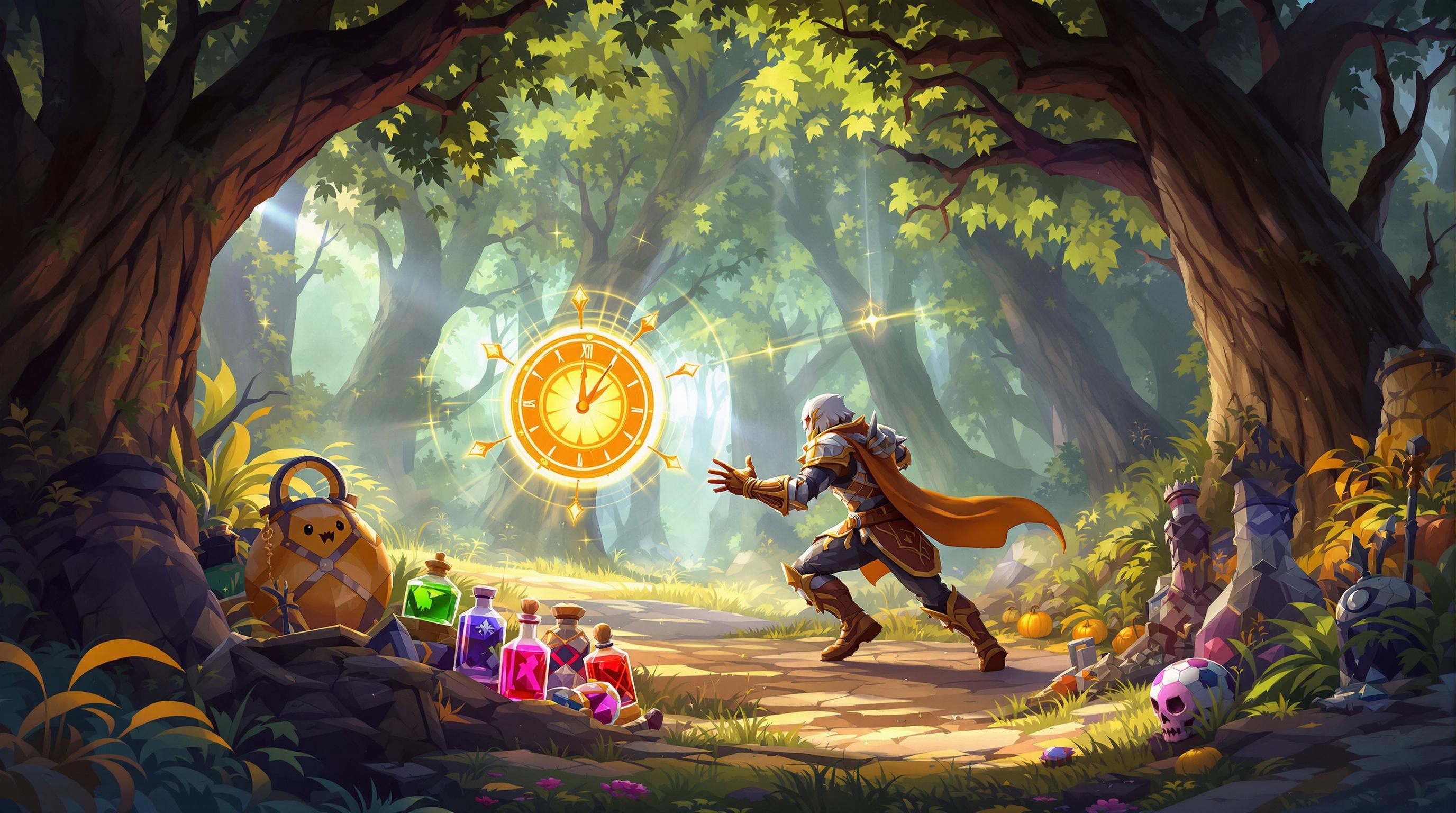Resource scarcity in tabletop role-playing games (TTRPGs) creates tension, strategy, and immersive storytelling. Players must manage limited health, spell slots, consumables, and time, making every decision impactful. Striking a balance is key - too many resources reduce challenge, while too few can frustrate players. Effective systems gradually deplete resources, offer replenishment points, and scale challenges to player growth. Games like Eclipse Phase 2E, Call of Cthulhu, and The One Ring showcase how scarcity can enhance both strategy and narrative.
| Resource Type | Impact on Gameplay |
|---|---|
| Health Points | Forces defensive decisions |
| Spell Slots | Requires careful allocation |
| Consumable Items | Creates risk/reward trade-offs |
| Time | Adds urgency to player actions |
Key takeaway: Resource scarcity isn't just about limits - it's about creating meaningful choices that drive engagement and storytelling.
Related video from YouTube
How Resource Scarcity Works in TTRPGs
Key Resource Types in TTRPGs
In tabletop role-playing games (TTRPGs), managing resources is a critical aspect of gameplay. Players must juggle various elements that directly impact their strategies and survival. The main resources include:
- Health Points: These determine whether a character can stay in the game. Losing health forces players to make defensive decisions.
- Spell Slots: These restrict the use of magical abilities, requiring players to carefully decide when and how to use them.
- Consumable Items: Items like potions or ammunition provide short-term benefits but often come with tough trade-offs.
- Time: Limited time adds urgency, pushing players to prioritize their actions.
| Resource Type | Primary Function | Strategic Impact |
|---|---|---|
| Health Points | Determines survival | Forces defensive choices |
| Spell Slots | Limits magic use | Requires careful allocation |
| Consumable Items | Provides short-term aid | Creates risk/reward decisions |
| Time | Constrains actions | Drives urgency and priorities |
These resources don't just influence tactical decisions - they also shape the larger narrative and strategic flow of the game.
Scarcity's Role in Strategy and Storytelling
Limiting resources adds depth to both strategy and storytelling. When players have fewer resources, every choice feels more impactful. As Jack Kellum explains:
"If you spend most of your preparation time focused on balance, you're going to find yourself in a never-ending hole chasing an impossible goal." [1]
This highlights the importance of prioritizing meaningful decisions over perfect balance. In horror-themed TTRPGs, for example, scarcity amplifies tension. A lack of healing items or ammunition can turn an ordinary encounter into a nerve-wracking ordeal.
Game masters can tweak resource availability to keep players engaged and challenged [2]. Striking the right balance ensures the game feels tough but not frustrating. Players are pushed to conserve resources, take calculated risks, work together, and think outside the box when supplies run low.
Scarcity also fuels the story. Decisions about whether to save or spend resources often lead to dramatic moments and character development, making the game more immersive and memorable.
sbb-itb-b8b00a5
Ways to Balance Resource Scarcity
Building Effective Resource Systems
Managing resources in TTRPGs takes careful planning to keep the game engaging without causing frustration. One effective approach is to design systems where resources gradually deplete, but players have clear, strategic ways to replenish them. Consistency is key - ensure that resource drain rates remain steady across different types of encounters.
A strong resource system balances several elements at once. For instance, limiting loot drops while ensuring combat encounters steadily drain resources helps maintain tension without overwhelming players. This creates a natural rhythm of scarcity and recovery.
| System Element | Purpose | Implementation |
|---|---|---|
| Gradual Depletion | Keeps tension high | Consistent drain per encounter |
| Replenishment Points | Prevents frustration | Pre-planned recovery locations |
| Scaling Challenges | Matches player growth | Higher resource demands |
Adjusting Resources on the Fly
Dynamic resource adjustments can keep the game exciting by tailoring challenges to player performance. Game masters can monitor how players are doing and tweak the game in real time. For example, they might increase enemy numbers during encounters or cut back on healing resources if players are breezing through challenges.
While these adjustments keep the game engaging, they also provide opportunities for players to adapt their strategies and feel more invested in their decisions.
Letting Players Manage Resources
Giving players control over resources adds another layer of engagement. Create situations where they must weigh immediate rewards against long-term goals. Some modern TTRPGs, like Eclipse Phase, take this concept further by treating things like reputation and relationships as resources, requiring players to manage their social standing strategically.
To make resource management meaningful, design systems that:
- Offer trade-offs between short-term benefits and long-term planning
- Reward creative problem-solving and tactical thinking
- Allow players to recover from mistakes while still facing consequences
Examples of Well-Balanced Resource Scarcity in TTRPGs
Games That Handle Scarcity Well
Eclipse Phase 2nd Edition stands out by focusing on reputation and social capital instead of physical resources. Players must navigate faction relationships, making every decision impactful.
Call of Cthulhu introduces its sanity system to build tension. Players are constantly weighing their character's mental health against the need to uncover dark, cosmic secrets.
The One Ring uses journey mechanics to immerse players in survival challenges. Managing supplies, fatigue, and hope adds layers of tension to the gameplay.
| Game | Resource Type | Key Mechanics |
|---|---|---|
| Eclipse Phase 2E | Social Capital | Reputation networks, favor trading |
| Call of Cthulhu | Mental Health | Sanity points, phobias |
| The One Ring | Survival Resources | Journey mechanics, hope system |
These games demonstrate how clever mechanics can make resource scarcity a core part of the experience, offering plenty of ideas for game masters and designers to explore.
Tips for Game Masters and Designers
If you're a game master or designer, here are some ways to incorporate effective resource management in your campaigns:
Dynamic Resource Adjustment
- Adapt resources based on how players engage with the game.
- Tie recovery opportunities to story moments for added immersion.
- Introduce unexpected challenges to test resource management skills.
Strategic Implementation
- Reward careful planning and discourage wasting resources.
- Use scarcity to enhance the narrative rather than hinder progress.
- Be clear about how resource mechanics work to avoid confusion.
Player Engagement
- Give players meaningful choices about how to use their resources.
- Encourage creative solutions when resources are limited.
- Keep the difficulty challenging but ensure goals remain achievable.
For more game options and innovative mechanics, check out the TTRPG Games Directory. It’s a great resource for finding systems that align with your preferences for resource-driven gameplay.
Conclusion and Further Resources
Key Takeaways on Resource Scarcity
Resource scarcity plays a major role in making TTRPGs engaging. The best resource systems balance clarity, adaptability, and meaningful decisions, enhancing both the gameplay experience and the story. When done well, these systems create deeper narratives and more challenging gameplay.
"Resource management is not just about scarcity; it's about creating meaningful choices for players" [2]
This idea highlights the importance of giving players control and encouraging strategic thinking in resource management.
Explore More TTRPGs in the TTRPG Games Directory

Looking for inspiration or examples of great resource systems? The TTRPG Games Directory is a great place to start. It helps players and game masters discover games with standout resource systems, offering insights into mechanics, genres, and player experiences.
| Feature | What It Offers |
|---|---|
| Mechanics Breakdown | A closer look at resource systems before you play |
| Genre Tags | Easily find games that match your preferred style |
| Indie Game Spotlights | Explore creative resource ideas in lesser-known games |
| Player Reviews | Get firsthand insights from the community |


